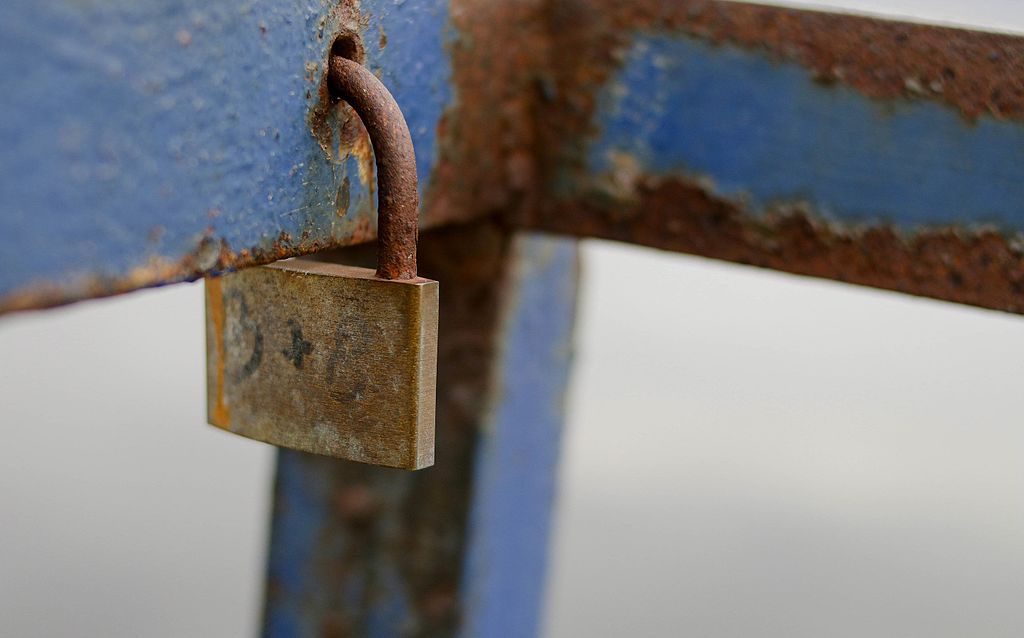what is Rust by chemical Man
Rust is an iron oxide, a usually red oxide formed by the redox reaction of iron and oxygen in the presence of water or air moisture. Several forms of rust are distinguishable both visually and by spectroscopy, and form under different circumstances Rust consists of hydrated iron(III) oxides Fe2O3·nH2O and iron(III) oxide-hydroxide (FeO(OH), Fe(OH)3).
Given sufficient time, oxygen, and water, any iron mass will eventually convert entirely to rust and disintegrate. Surface rust is flaky and friable, and it provides no protection to the underlying iron, unlike the formation of patina on copper surfaces. Rusting is the common term for corrosion of iron and its alloys, such as steel. Many other metals undergo similar corrosion, but the resulting oxides are not commonly called rust.citation needed
Other forms of rust exist, like the result of reactions between iron and chloride in an environment deprived of oxygen. Rebar used in underwater concrete pillars, which generates green rust, is an example. Although rusting is generally a negative aspect of iron, a particular form of rusting, known as "stable rust," causes the object to have a thin coating of rust over the top, and if kept in low relative humidity, makes the "stable" layer protective to the icon below, but not to the extent of other oxides, such as aluminum.
Oxidation of iron
When impure (cast) iron is in contact with water, oxygen, other strong oxidants, or acids, it rusts. If salt is present, for example in seawater or salt spray, the iron tends to rust more quickly, as a result of electrochemical reactions. Iron metal is relatively unaffected by pure water or by dry oxygen. As with other metals, like aluminum, a tightly adhering oxide coating, a passivation layer, protects the bulk iron from further oxidation. The conversion of the passivating ferrous oxide layer to rust results from the combined action of two agents, usually oxygen and water.
Other degrading solutions are sulfur dioxide in water and carbon dioxide in water. Under these corrosive conditions, iron hydroxide species are formed. Unlike ferrous oxides, the hydroxides do not adhere to the bulk metal. As they form and flake off from the surface, fresh iron is exposed, and the corrosion process continues until either all of the iron is consumed or all of the oxygen, water, carbon dioxide or sulfur dioxide in the system are removed or consumed.
When iron rusts, the oxides take up more volume than the original metal; this expansion can generate enormous forces, damaging structures made of iron. See economic effect for more details.
Rust is an iron oxide, a usually red oxide formed by the redox reaction of iron and oxygen in the presence of water or air moisture. Several forms of rust are distinguishable both visually and by spectroscopy, and form under different circumstances Rust consists of hydrated iron(III) oxides Fe2O3·nH2O and iron(III) oxide-hydroxide (FeO(OH), Fe(OH)3).
Given sufficient time, oxygen, and water, any iron mass will eventually convert entirely to rust and disintegrate. Surface rust is flaky and friable, and it provides no protection to the underlying iron, unlike the formation of patina on copper surfaces. Rusting is the common term for corrosion of iron and its alloys, such as steel. Many other metals undergo similar corrosion, but the resulting oxides are not commonly called rust.citation needed
Other forms of rust exist, like the result of reactions between iron and chloride in an environment deprived of oxygen. Rebar used in underwater concrete pillars, which generates green rust, is an example. Although rusting is generally a negative aspect of iron, a particular form of rusting, known as "stable rust," causes the object to have a thin coating of rust over the top, and if kept in low relative humidity, makes the "stable" layer protective to the icon below, but not to the extent of other oxides, such as aluminum.
Oxidation of iron
When impure (cast) iron is in contact with water, oxygen, other strong oxidants, or acids, it rusts. If salt is present, for example in seawater or salt spray, the iron tends to rust more quickly, as a result of electrochemical reactions. Iron metal is relatively unaffected by pure water or by dry oxygen. As with other metals, like aluminum, a tightly adhering oxide coating, a passivation layer, protects the bulk iron from further oxidation. The conversion of the passivating ferrous oxide layer to rust results from the combined action of two agents, usually oxygen and water.
Other degrading solutions are sulfur dioxide in water and carbon dioxide in water. Under these corrosive conditions, iron hydroxide species are formed. Unlike ferrous oxides, the hydroxides do not adhere to the bulk metal. As they form and flake off from the surface, fresh iron is exposed, and the corrosion process continues until either all of the iron is consumed or all of the oxygen, water, carbon dioxide or sulfur dioxide in the system are removed or consumed.
When iron rusts, the oxides take up more volume than the original metal; this expansion can generate enormous forces, damaging structures made of iron. See economic effect for more details.


Leave a comment